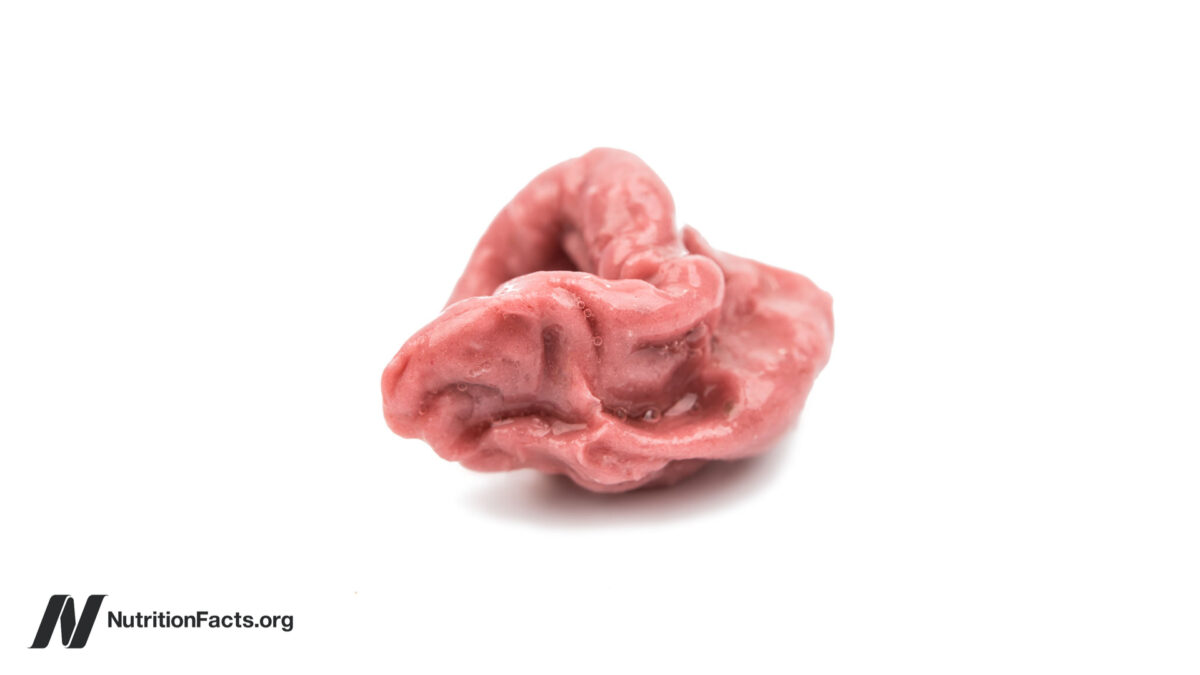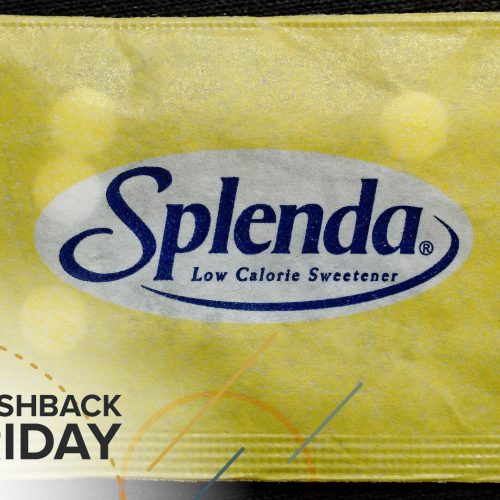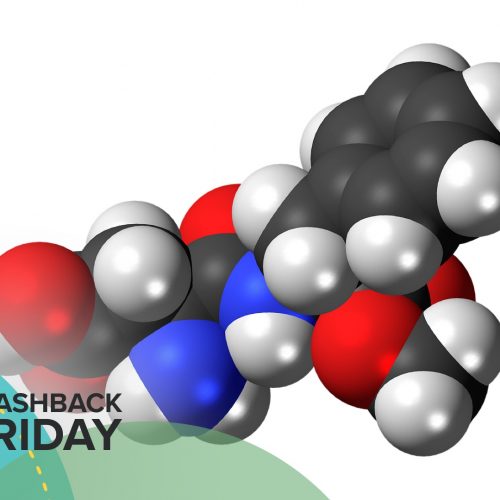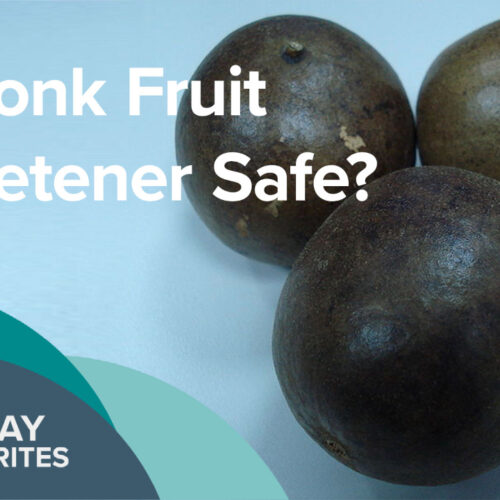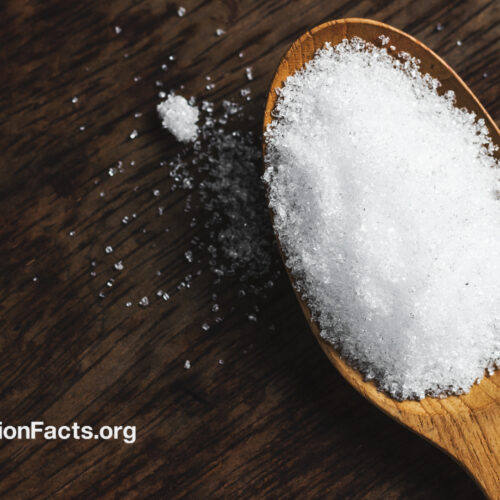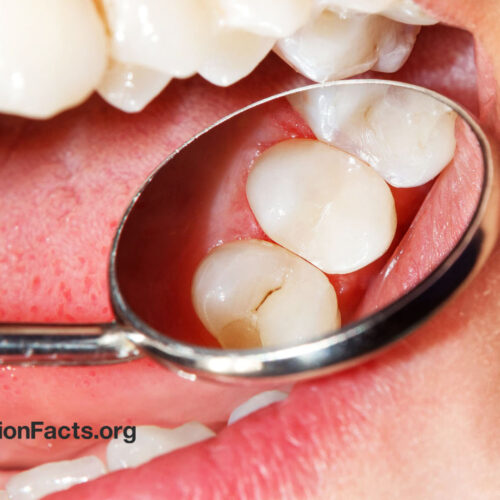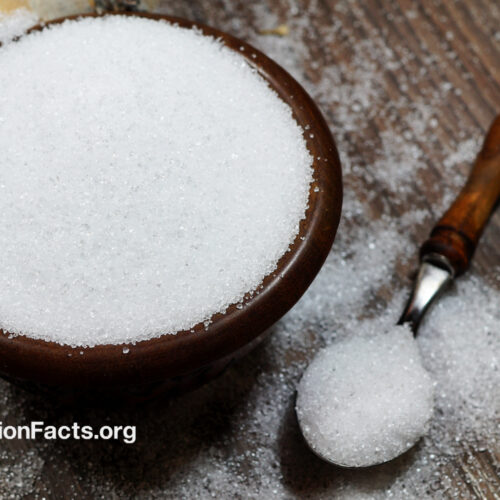If extra chewing is effective in suppressing your appetite when it comes to food, what about chewing gum as a weight-loss strategy?
As I discuss in my video Does Chewing Gum Help with Weight Loss?, chewing gum may only burn about three calories an hour, but the calorie expenditure isn’t only working your little jaw muscles. For some reason, chewing gum revs up your heart rate as much as 12 extra beats per minute after chewing two sticks of gum, even if you’re just sitting quietly, as you can see in the graph below and at 0:21 in my video. It also works while walking, increasing your heart rate by about three more beats per minute (and proving scientifically that people can indeed walk and chew gum at the same time).
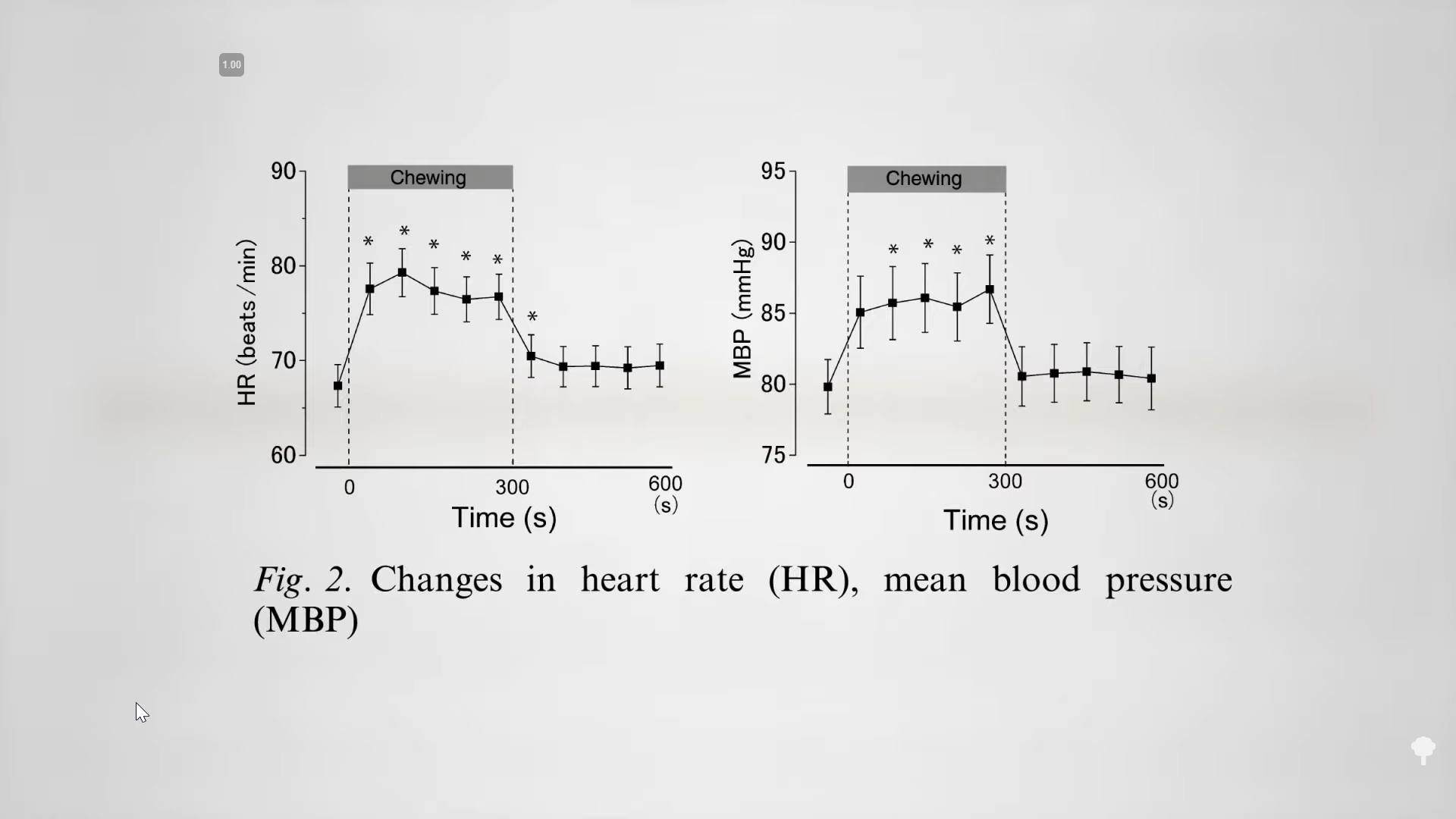
Does this translate into weight loss? Researchers at the University of Buffalo asked study participants to either chew gum before every single eating occasion or not chew any gum at all for a number of weeks. On the gum-chewing weeks, the subjects didn’t just have to chew gum before each meal, but also before each snack or drink that contained any calories. That may have been too much, so the participants actually ended up eating on fewer occasions, switching from four meals a day on average down closer to three. They ended up eating more calories at each of those fewer meals, though, and had no overall significant change in caloric intake and, no surprise, had no change in weight. See the charts below and at 1:08 in my video.
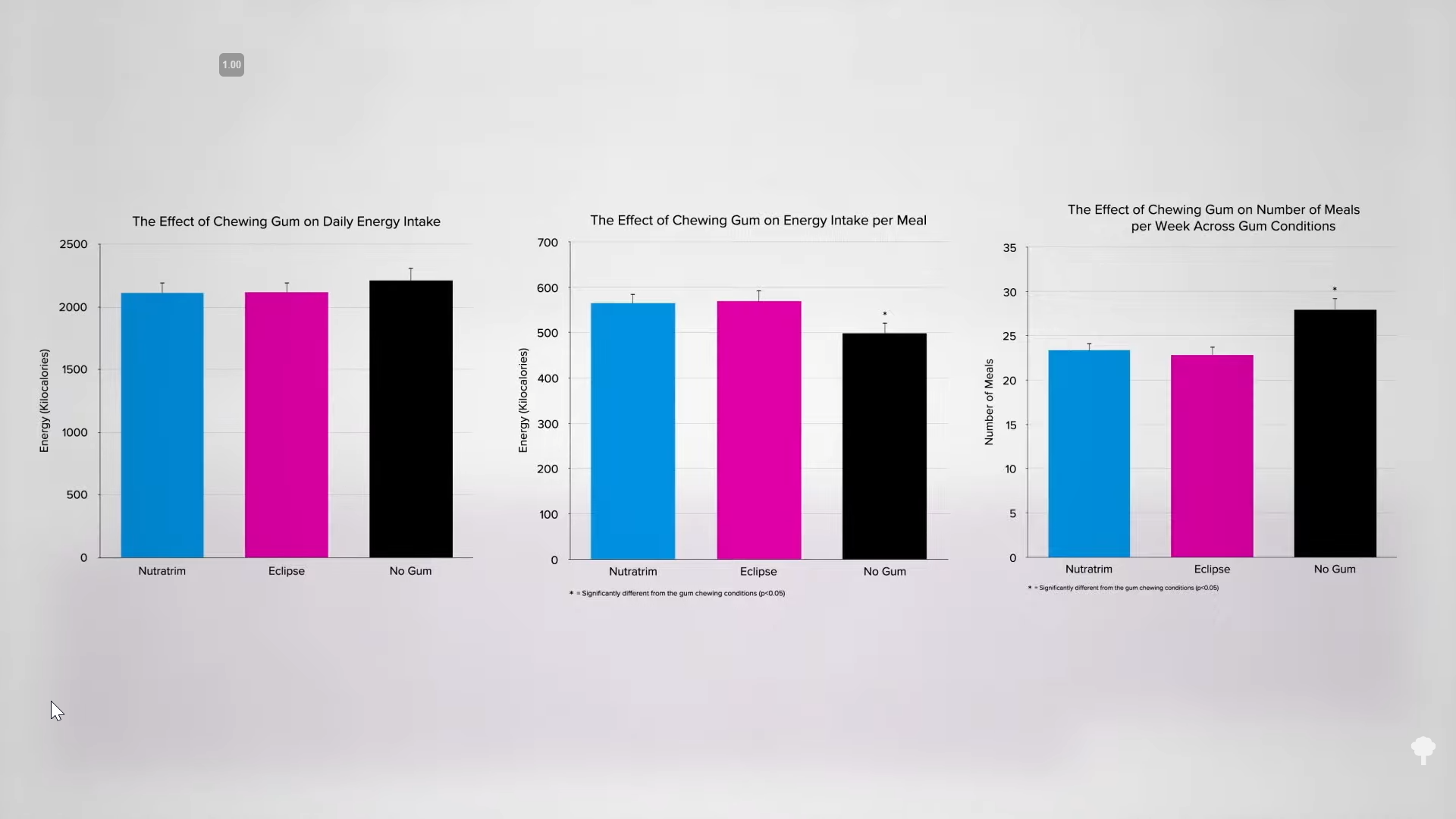
University of Alabama researchers tried a different tack, randomizing people to chew gum after and between meals. After two months, compared to those randomized to avoid gum entirely, no improvements were noted in weight, body mass index (BMI), or waist circumference. However, some studies have suggested that chewing gum has an appetite-suppressing effect. For example, as you can see below and at 1:51 in my video, in one study, people ate 68 fewer calories of pasta at lunch after 20 minutes of chewing gum, but other studies have shown differently.

Whenever there are conflicting findings, instead of just throwing up our hands, it can be useful to try to tease out any study differences that could potentially account for the disparate results. The obvious consideration is the funding source. That failed University of Alabama weight-loss study was funded by a gum company, so the outcomes are not necessarily predetermined.
As well, different types of gum using different sweeteners may have contributed to the diversity of findings. As you can see in the graphs below and at 2:35 in my video, a study that found that chewing gum may actually increase appetite was done with aspartame-sweetened gum. People reported feeling hungrier after chewing the sweetened gum—and not only compared to no gum, but compared to chewing the same gum with no added aspartame. It’s true that not one randomized controlled trial has ever shown a benefit to “chewing gum as a strategy for weight loss,” but they all used gum containing artificial sweeteners.

There was a landmark study that showed that the size of a sip matters when it comes to reducing the intake of sweet beverages. When study participants took one sip every two seconds or a quadruple-sized gulp every eight seconds, but with the same ingestion rate of 150 grams per minute, the smaller sip group won out, satiating after about one-and-a-half cups compared to two cups when taking larger gulps, as you can see in the graph below and at 3:13 in my video. This is thought to be because of increased oro-sensory exposure, so our brain picks up the more frequent pulses of flavor and calories. But repeat the experiment with an artificially sweetened diet drink, and the effect appears to be blunted, as you can see in the graph below and at 3:38 in my video. So, might a different type of gum have a different effect? The positive pasta study I discussed earlier was performed using gum sweetened mainly with sorbitol, a sweet compound that’s found naturally in foods like prunes, and, like prunes, can have a laxative effect.

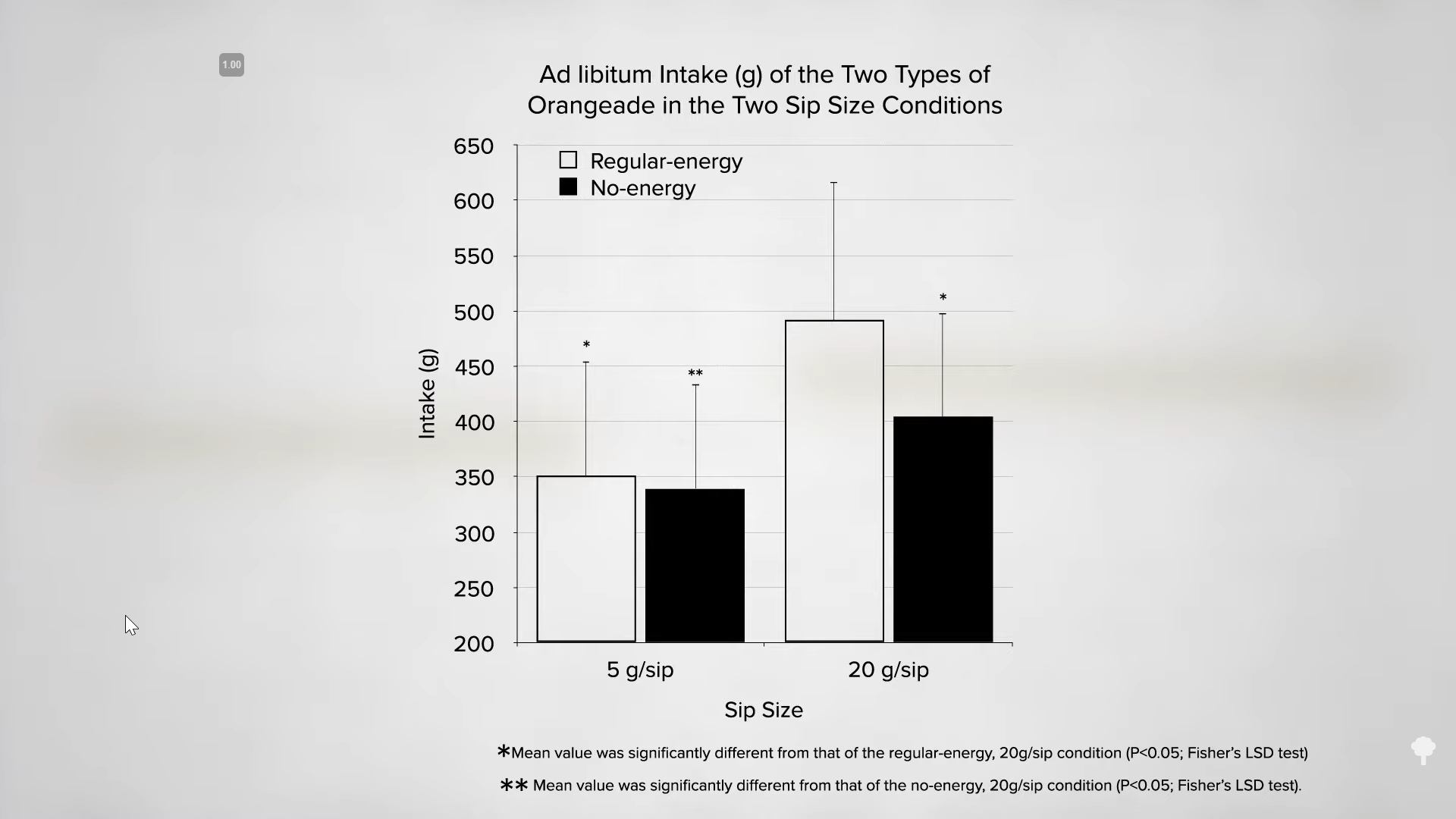
Case reports like “An Air Stewardess with Puzzling Diarrhea” unveil what can happen when you have 60 sticks of sorbitol-sweetened sugar-free gum a day. Another report was entitled “Severe Weight Loss Caused by Chewing Gum.” A 21-year-old woman ended up malnourished after suffering up to a dozen bouts of diarrhea a day for eight months due to the 30 grams of sorbitol she was getting chewing sugar-free gum and candies every day. Most people suffer gas and bloating at 10 daily grams of sorbitol, which is about eight sticks of sorbitol-sweetened gum, and, at 20 grams, most get cramps and diarrhea. So, you want to be careful how much you get.
The bottom line is that we have no good science showing that chewing gum results in weight loss. Could that be because the studies used artificial sweeteners that “may have counteracted” any benefits? Maybe, but the most obvious explanation for the results to date “is that chewing gum simply is not an efficacious weight-loss strategy”—and that’s coming from researchers funded by the gum company itself.
How Many Calories Do You Burn Chewing Gum? Watch the video to find out. For information on both artificial and natural low-calorie sweeteners, check out the related videos below.
